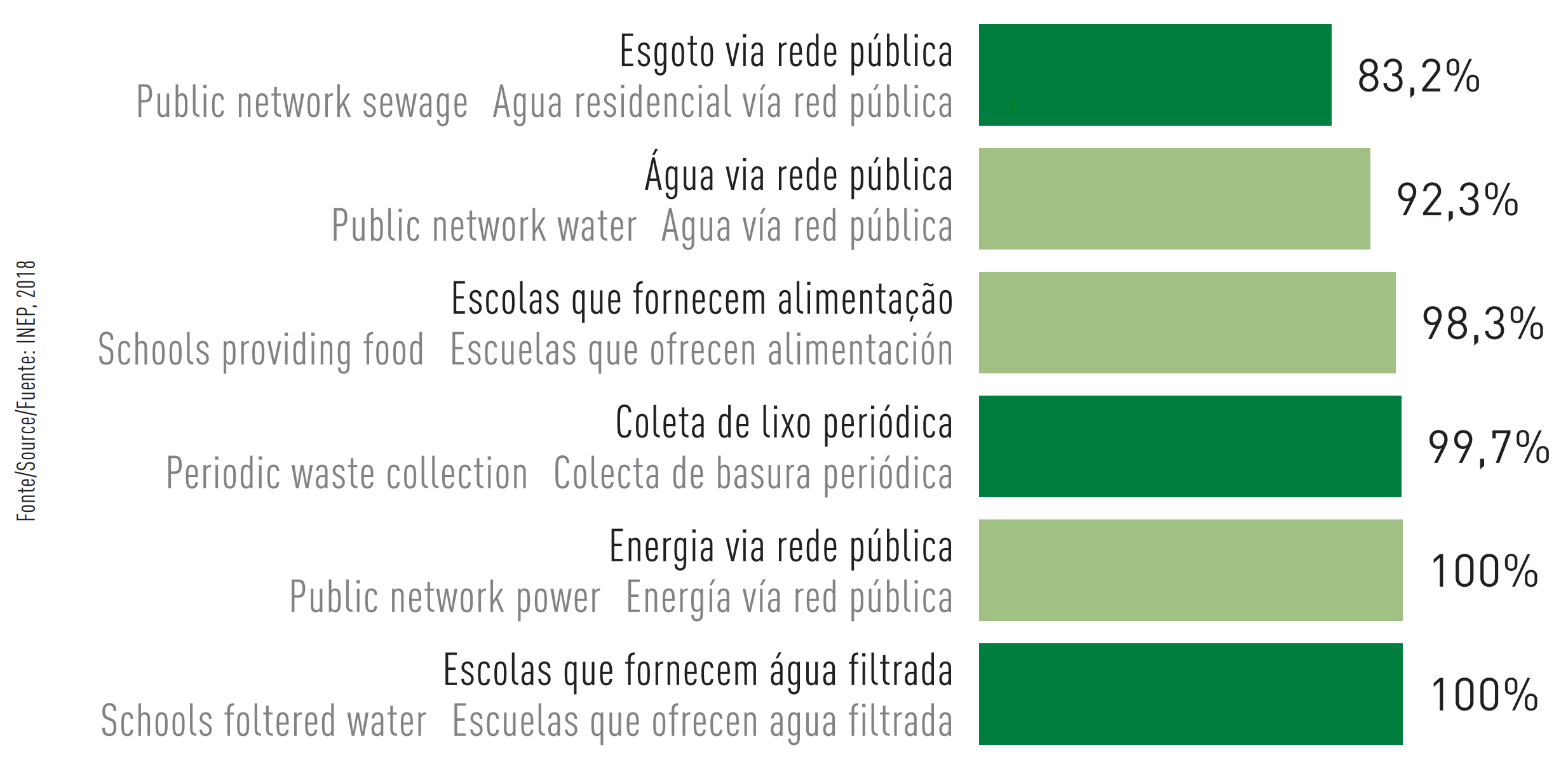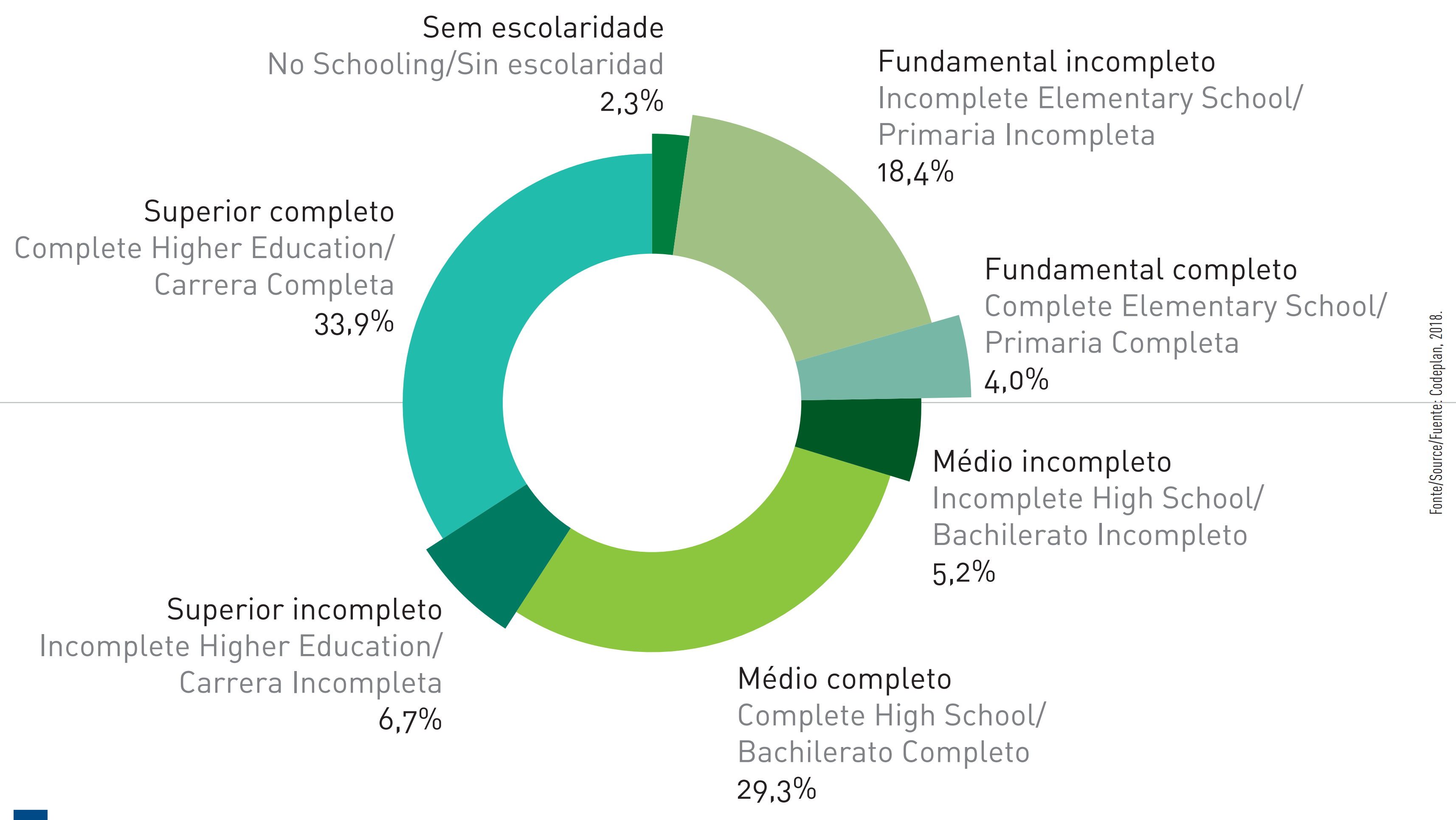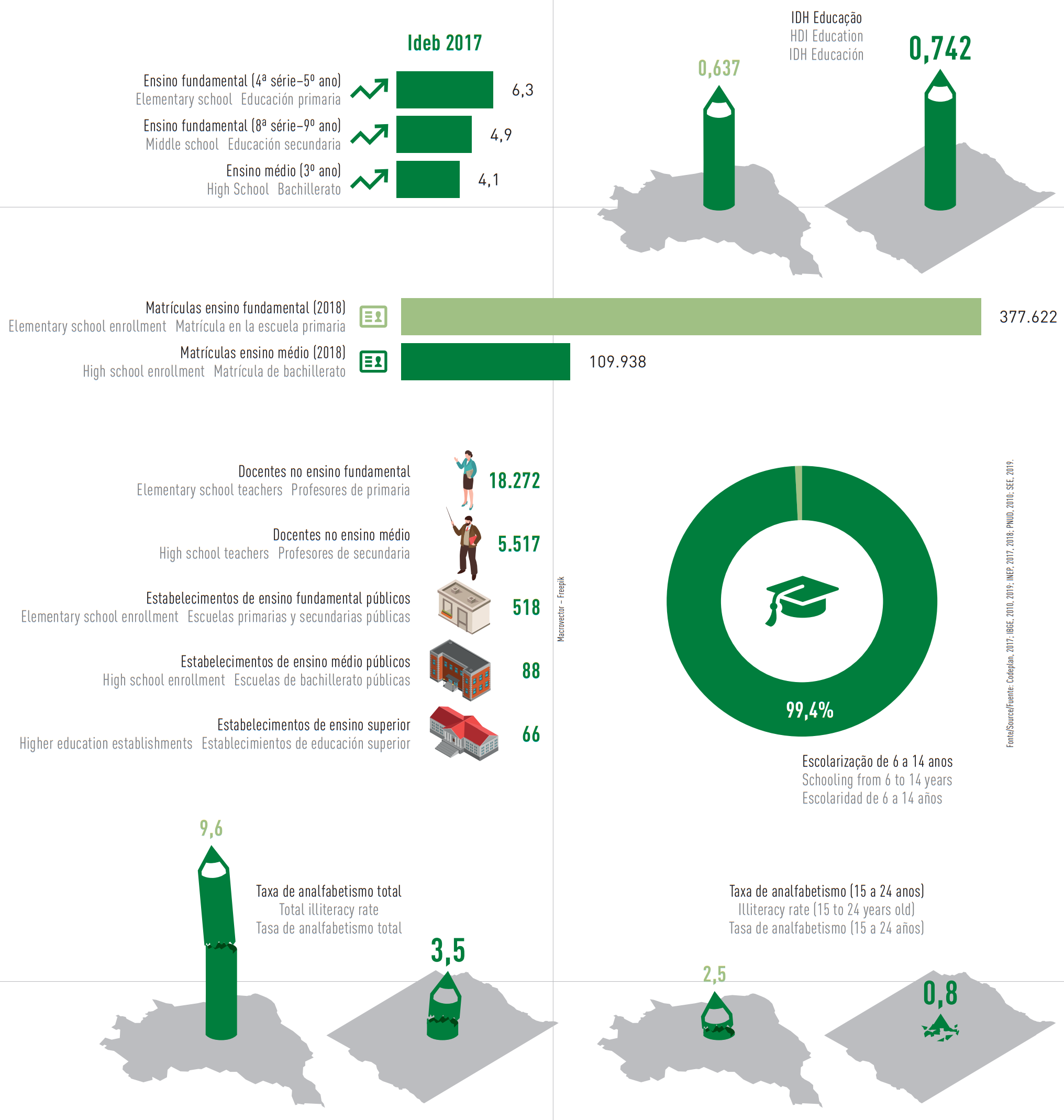5 - Socioeconomic environment
5.3 – Education
Among the 5,665 Brazilian municipalities, the Federal District is 73rd among the greatest values on the Human Development Index – HDI. Among the federation units, the Federal District has the lowest illiteracy rate and the percentage of residents holding an undergraduate degree is above the national average. The Brazilian Education Quality Index – IDEB for the Federal District is also above the national average and, for the initial grade school years, the Federal District has already met the 2022 goal of 6.0 proposed for Brazil, which is comparable to the quality of education in developed countries. Relating to basic education (Preschool, grade school and high school) enrollments are greatest in the public school system.


Figure 50 – Federal District school distribution



